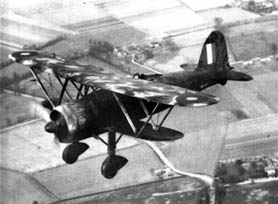I didnt mean to stir up a controversy on the Tiger and its flaws - but Im glad it happened. This sort of discussion is why a forum like this is tops. Thanks to everyone for adding in.
Not the least of the Tigers flaws, when it was running that is, was its voracious appetite for gasoline. Not diesel fuel, mind you, like it’s Russian counterparts, but highly refined, hi-octane gasoline. Mechanical breakdowns and crew training notwithstanding, it seems you had to have an unending fuel line attached to the beast, wherever it went. Many a wartime resistance effort was directed at that resource alone. The Germans only too late learned what the Russians knew - simple is far better adapted to war than complex.
But not all German planners were “trotzkopfsen.” Study indicates that there were those who wise;y preferred the diesel alternative, in fact, for strategic simplicity and power delivered per gallon. Some within the Reich’s production cadre went so far as to propose copying as much of the eye-opening T-34 as possible, just to stay in the game as it had developed with Germany’s foes. But no Russian influence would be felt in German arms “werkes,” regardless of how good it was. So diesel was out and gasoline was in. It was reputed that it took 150 gallons of the stuff to go 50 miles in the Tiger I.
The Tiger, for its size, was well suited to most decent tank terrain… much to the surprise of it’s detractors and enemies. While not real speedy (30-35mph tops), it had good maneuverability, armament and armor protection - all carried on a wide track footprint that helped to distribute it’s great weight over the earth. There are good reasons why it was renowned and even by war’s end, few Allied tanks could challenge it on even terms.
The problem was that to transport the thing any distance required removing the outer set of roadwheels and the battle tracks for the then-common rail tranport mode. Once that was done, a special, narrow track was threaded on so the monster could fit on the average rail car without overhanging the sides! This meant you had to dismount the battle tracks and remount a new set every time you tranported the things overland; and then do it all over again at your destination. These ersatz transport tracks didn’t spread out the vehicle’s weight over terrain and couldn’t take the strain of operation, so had no other use - except to be stored until they were needed again. Strikes me as a flaw for a highly mobile, mechanized fighting force.
Green as a Tiger color in Tunisien? I can only say that it’s invisible - meaning I can’t see it from my workbench. I know that N. Africa isn’t just a barren wasteland, especially along the coasts. I thought the reference to Rome was a sound one and a great interjection on that score. Many, many pics of Tunisian Tigers show a backing landscape that is scrubby, flush with olive groves and orchards. More than a few Mediterranean countries to this day incorporate the color in their armor schemes.
But, if you’ll recall, I plan a Tiger I that is obviously “deserty” at first glance, focused around the captured tank now displayed at Bodington. After reviewing as much as I have up til now, I think the RAL8020 / RAL7008 combination is sound.
I, too, have my ideas and hopefully, lucid comments. But, I am amazed at the volume of historical knowledge represented by a group like this. While most Avearge Joes could care less about such things, it shows that this group is anything but average. Well done, folks!
 "Kasserine Pass was a miserable place to be on Friday morning, the 19th of February, 1943. A cold wind blew sheets of rain onto the soldiers of Task Force Stark. The desert floor was so saturated from weeks of rain that even tracked vehicle movement was restricted to improved roads."
"Kasserine Pass was a miserable place to be on Friday morning, the 19th of February, 1943. A cold wind blew sheets of rain onto the soldiers of Task Force Stark. The desert floor was so saturated from weeks of rain that even tracked vehicle movement was restricted to improved roads."